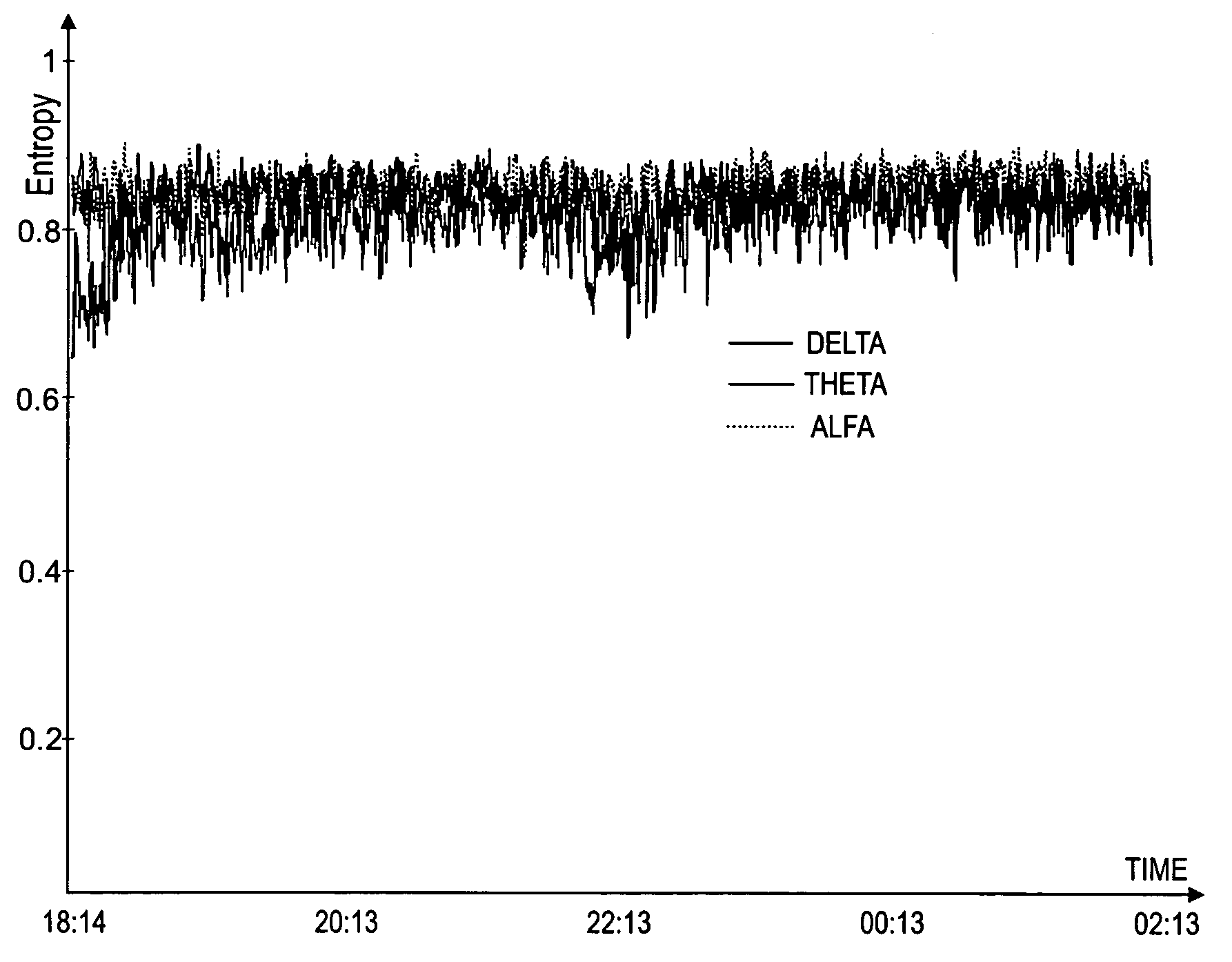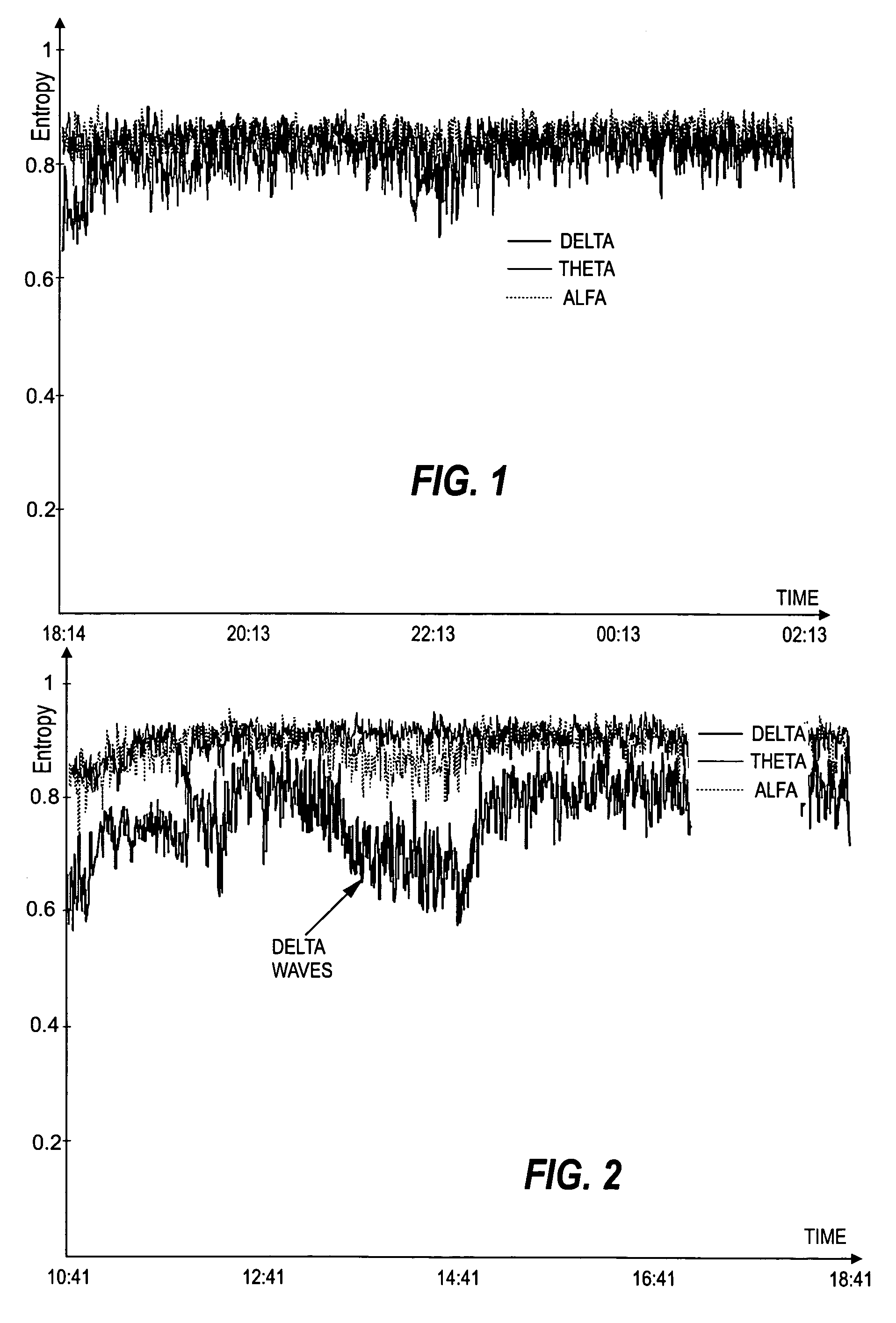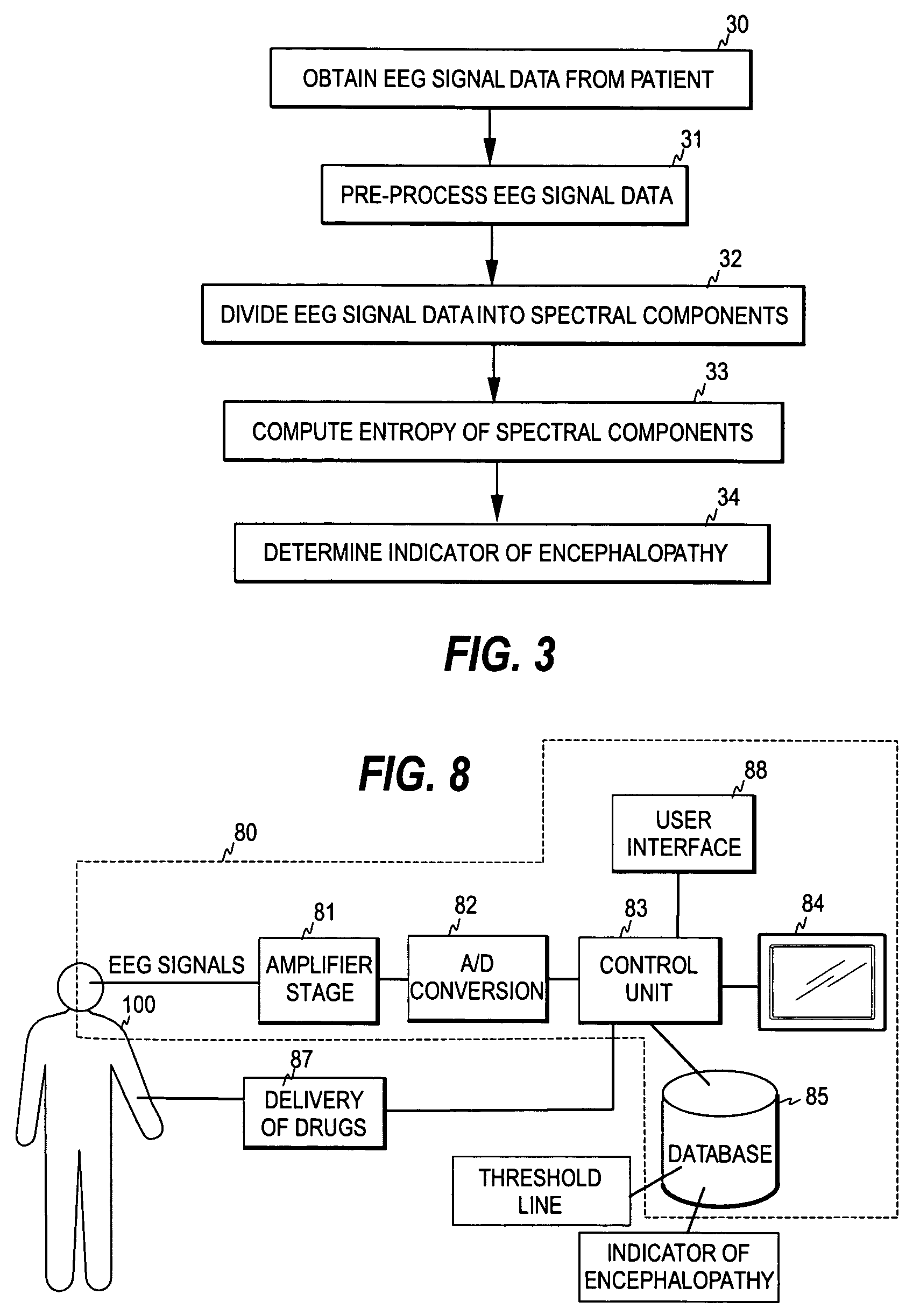Detection of encephalopathy
a technology for encephalopathy and detection, applied in the field of detection of encephalopathy, can solve the problems of reducing the time required for ventilators and reducing the length of stay of patients in icu, and achieve the effect of easy modification to d
- Summary
- Abstract
- Description
- Claims
- Application Information
AI Technical Summary
Benefits of technology
Problems solved by technology
Method used
Image
Examples
Embodiment Construction
[0047]While a patient is deeply sedated and unconscious, the spectral entropy values calculated from the EEG signal are normally low, meaning that the EEG signal consists of regular waves. This has previously been shown by many publications.
[0048]As described above, the invention rests on the discovery that encephalopathy induces disorder to the low frequency range of the EEG, i.e. encephalopathy can be seen in the EEG as an increase in the spectral entropy values calculated from the low frequency range of the EEG.
[0049]FIGS. 1 and 2 illustrate the entropies of the Delta, Theta and Alpha waves, measured during an eight hour period from two different patients. FIG. 1 shows the entropies measured from a sedated patient suspected to have encephalopathy (clinician's diagnosis), while FIG. 2 shows the entropies measured from a patient who is also sedated but has a healthy brain (clinician's diagnosis). As can be seen from the figures, the separator for these patients is the spectral entr...
PUM
 Login to View More
Login to View More Abstract
Description
Claims
Application Information
 Login to View More
Login to View More - R&D
- Intellectual Property
- Life Sciences
- Materials
- Tech Scout
- Unparalleled Data Quality
- Higher Quality Content
- 60% Fewer Hallucinations
Browse by: Latest US Patents, China's latest patents, Technical Efficacy Thesaurus, Application Domain, Technology Topic, Popular Technical Reports.
© 2025 PatSnap. All rights reserved.Legal|Privacy policy|Modern Slavery Act Transparency Statement|Sitemap|About US| Contact US: help@patsnap.com



